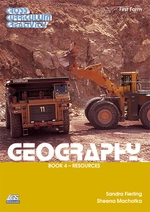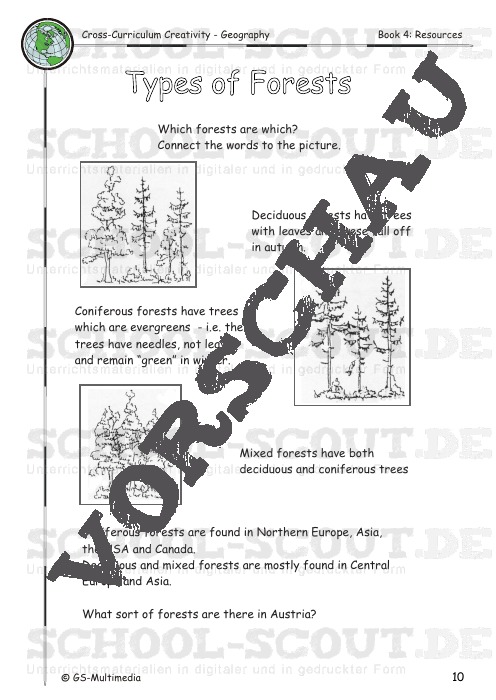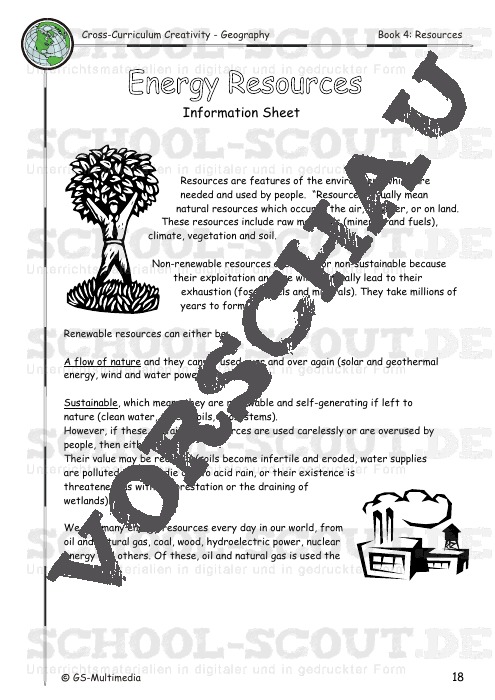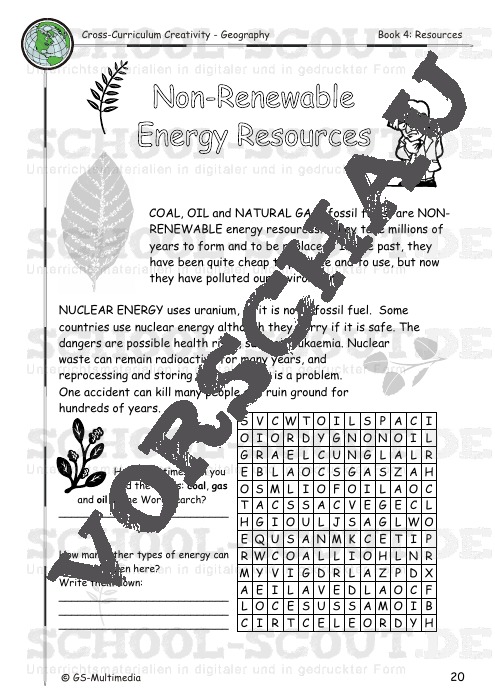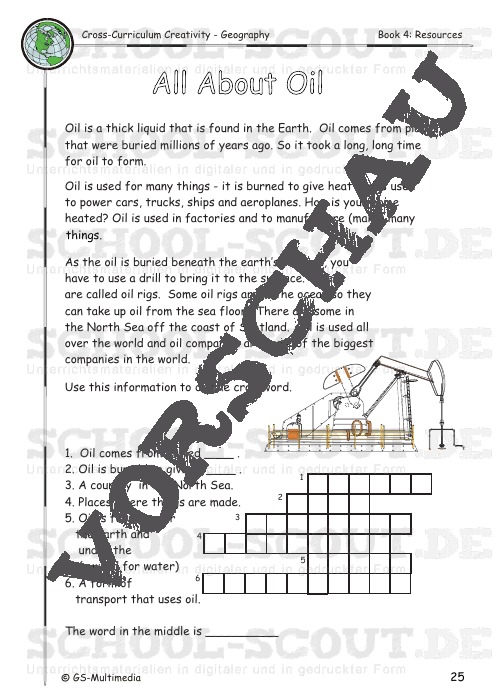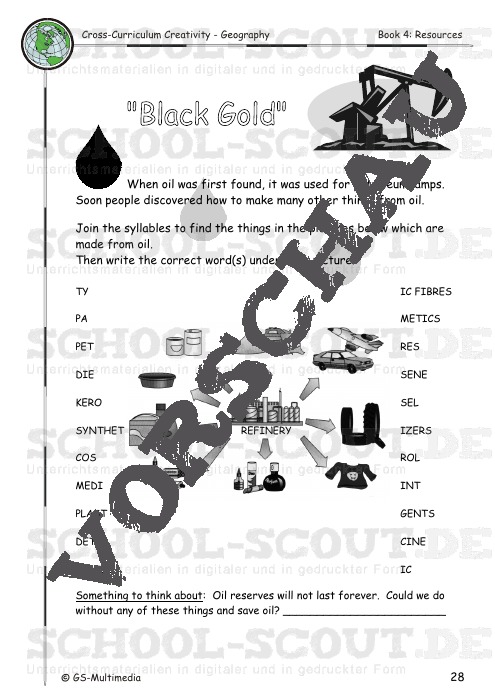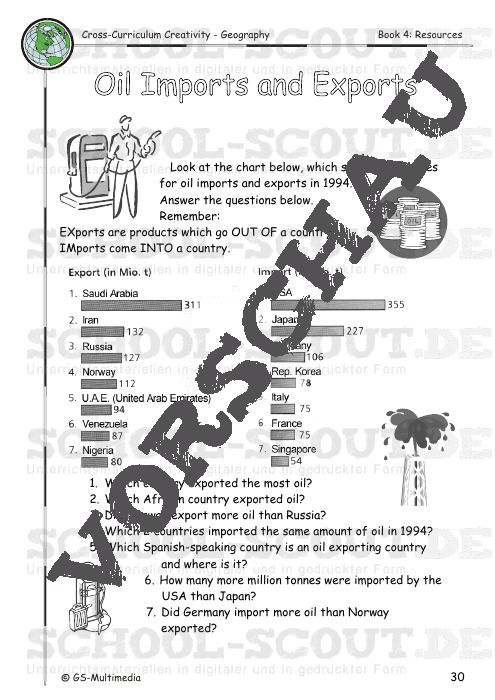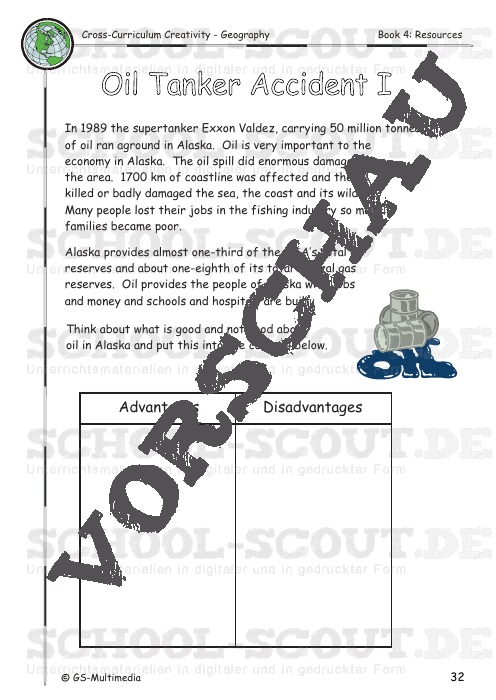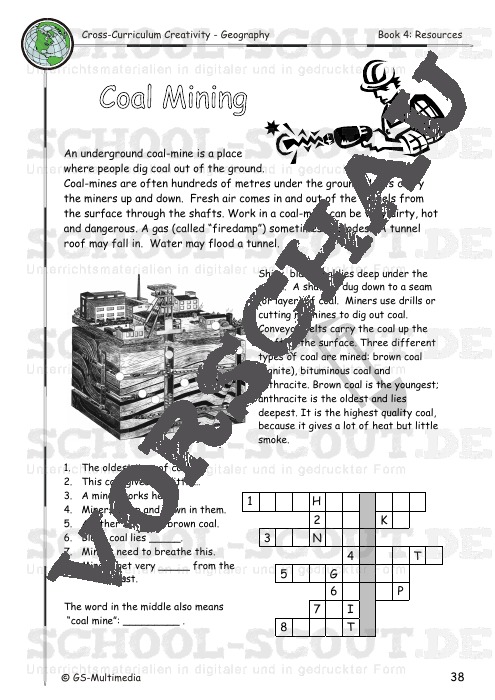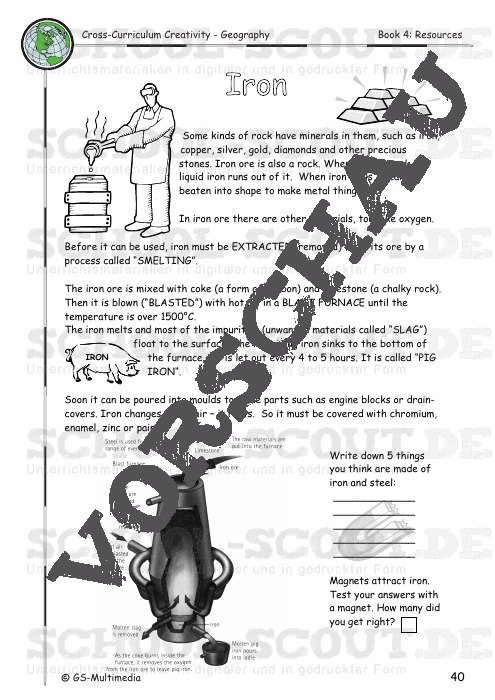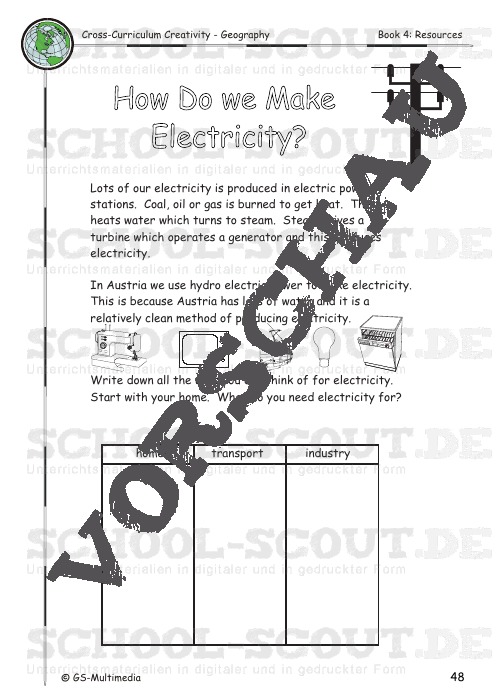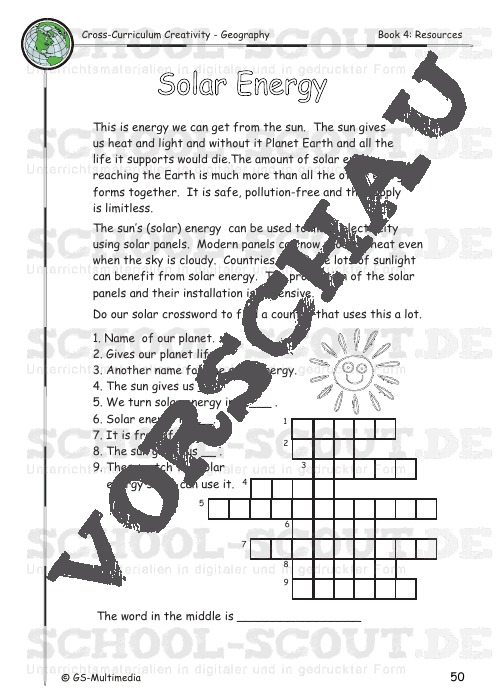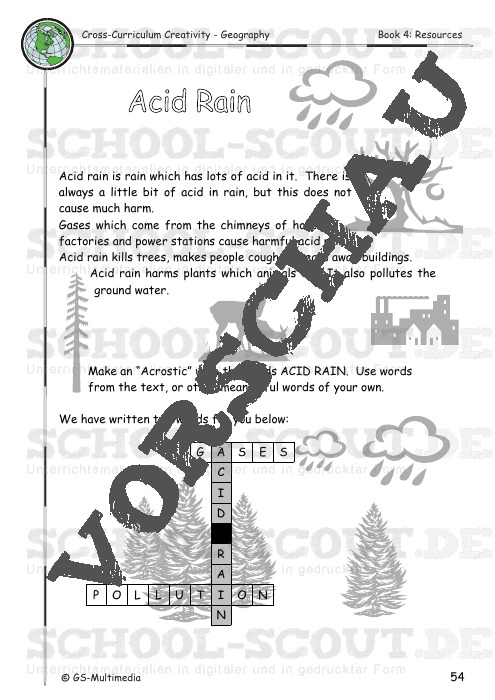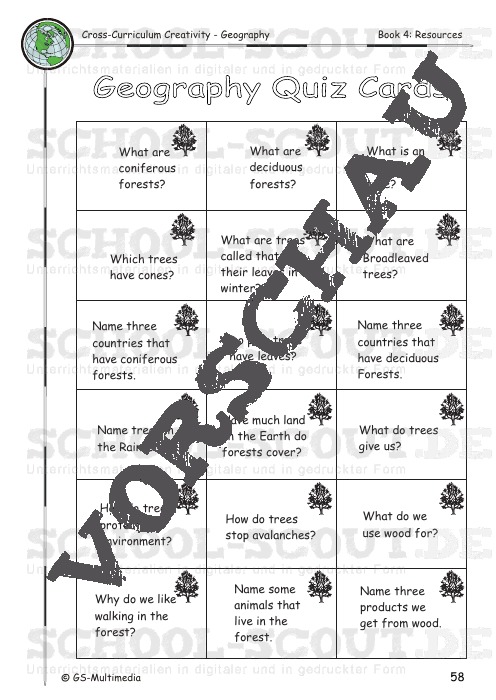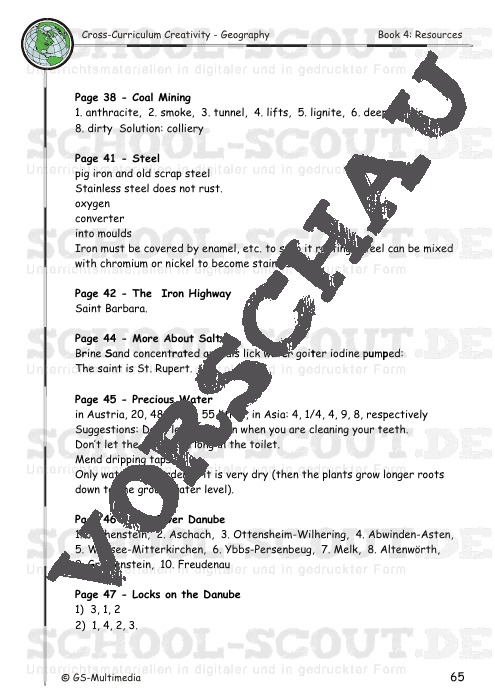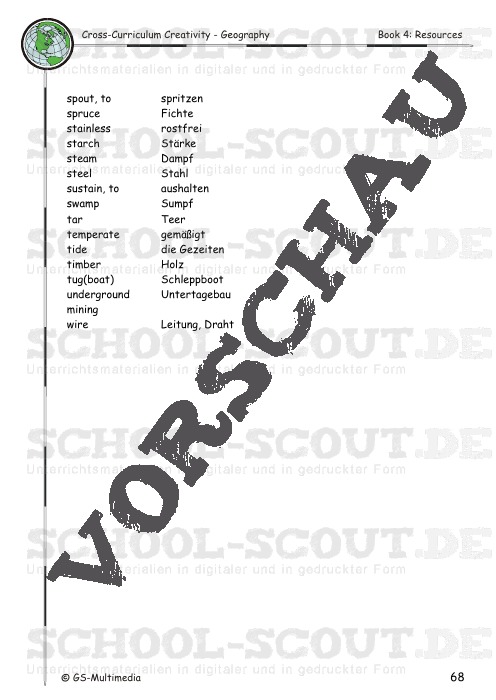Cross Curriculum Creativity - Geography - Book 4: Resources
Erdkunde / Geografie bilingual
- Typ:
- Unterrichtseinheit
- Umfang:
- 71 Seiten (16,1 MB)
- Verlag:
- Lemberger Group
- Autor/in:
- Fierling, Sandra / Machotka, Sheena
- Auflage:
- 4 (2006)
- Fächer:
- Erdkunde/Geografie
- Klassen:
- 5-6
- Schulform:
- Gymnasium
Vorlagen zum Thema “Resourcen – Wald und Energieträger” für den bilingualen Unterricht in Erdkunde/Geografie. Entlastet LehrerInnen – verkürzt die Vorbereitungsarbeit auf ein Minimum
- anschaulich aufbereitete Grundinformationen
- praxiserprobt und lebensnah
- vielfältige Grafiken und Kopiervorlagen
- für Freiarbeit und leistungsdifferenzierten Unterricht
For instant use!
Inhalt / Content:
Introduction
Forestry
- Forestry – Information sheet
- Forests of the World
- Forests in the World
- Forests for the World
- Types of Forests
- Forests Give us Wood
- From Tree to Table
- Logging
- Take Care of the Forest
- Forests
- Wood
- Deforestation
Energy Resources
- Energy Resources – Information sheet
- Energie Resources
- Non-Renewable Energy Resources
- Renewable Resources 1
- Renewable Resources 2
- Alternative Forms of Energy
- More About Energy
- All about Oil
- Oil and Natural Gas
- Oil Is Important
- “Black Gold”
- Oil Goes Round the World
- Oil Imports and Exports
- Oil Transportation
- Oil Tanker Accidents 1
- Oli Tanker Accidents 2
- Coal
- More about Coal
- The Coal Connection
- Opencast Coual-Mining
- Coal Mining
- Coal and the Countryside
- Iron
- Steel
- The Iron Highway
- Salt
- More About Salt
- Precious Water
- The River Danube
- Locks on the Danube
- How do we Make Electricity?
- Danger – Electricity
- Solar Energy
- Energy from the Wind
- Saving Energy
- Energy Resources
- Acid Rain
- Austria´s Natural Resources
- Natural Resources
- Geography Wordsearch
- Geography Quiz Cards (3)
- Geography Quiy Cards (blank)
- Geography Quiz (blank)
Solutions
Dictionary
Welcome to Bilingual Geography. You will find information sheets for teachers, worksheets for your students, worksheets for quizzes and cards, etc. There is a dictionary at the end of the book, as well as solutions to the worksheets.
This book is based on the Core Curriculum and you will find in it the information the children need to know in their first year of geography. Most of the worksheets are graded. You will therefore be able to individualise your lessons, giving out simple or more advanced worksheets to your students and/or making your own worksheets with the information provided. These can also be copied on overhead foil.
Everyone teaches in their own particular style and we would just like to give you some ideas that we have found useful in our own situations. A bi-lingual vocabulary book can be a useful item for students to have.
Another idea is to have this at the end of their geography notebook – although this is more temporary as they are constantly filling up their notebooks and having to acquire new ones. Vocabulary is important and necessary. Geography is especially good for anchoring new words and repetition. The first year is great for this – especially with map use. Phrases like “Eisenstadt is the capital of Burgenland” and “the Atlantic Ocean is between Europe“and America” are good ways to repeat phrases many times and give the children lots of confidence. Making posters for your class about capital cities in English is always a very nice activity and posters in the classroom certainly anchor the English presence in the room. The section at the end includes an empty quiz chart. We have used this constantly to revise the children’s knowledge in a fun way. Asking each child one question per lesson/week, for example, doesn’t take up much time and can be a valuable revision guide for the whole class.


